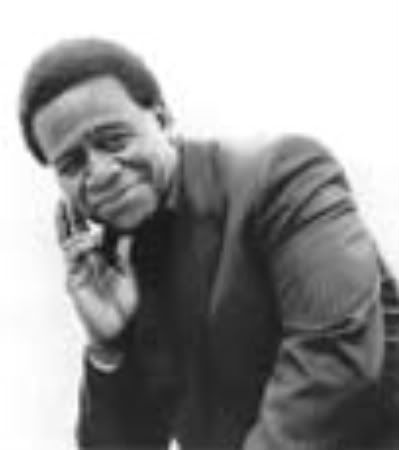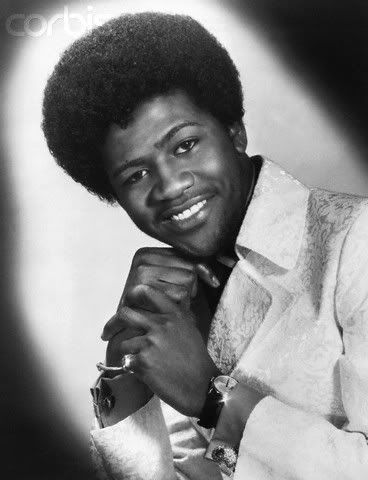
 Al Green
Al GreenWith his incomparable voice, full of falsetto swoops and nuanced turns of phrase, Al Green rose to prominence in the Seventies. One of the most gifted purveyors of soul music, Green has sold more than 20 million records. During 1972 and 1973, he placed six consecutive singles in the Top Ten: “Let’s Stay Together,” “Look What You Done for Me,” “I’m Still in Love With You,” “You Ought to Be With Me,” “Call Me” and “Here I Am (Come and Take Me).” “Let’s Stay Together” topped the pop chart for one week and the R&B charts for nine; it was also revived with great success by Tina Turner in 1984. In terms of popularity and artistry, Green was the top male soul singer in the world, voluntarily ending his reign with a move from secular to gospel music in 1979.
Beyond his chart-making abilities, Green set a new standard for soul music and essentially created a new kind of soul - one that combined the gritty, down-home sensibility of the Memphis based Stax-Volt sound with the polished, sweeter delivery of Motown. Over a fat, funky bottom, Green’s subtle and inventive voice would soar into falsetto range with beguiling ease. His finest recordings showcase a penchant for jazzy filigree and soulful possession rivaled by the likes of Marvin Gaye and Aretha Franklin. They also are the products of teamwork, as Green benefited immensely from a longstanding association with producer Willie Mitchell and the house band at Hi Records.
Green was born on an Arkansas farm in 1946 and grew up in Grand Rapids, Michigan. He sang gospel with the Greene Brothers, a family quartet, and belonged to the Creations and the Soul Mates in the Sixties. In 1967, the Soul Mates had a #5 R&B hit with “Back Up Train.” In terms of influences, “I was raised on the sound of Sam Cooke and the Soul Stirrers,” Green has said. A fateful crossing of paths between Green and Willie Mitchell in Texas, where both were performing, resulted in Green’s signing to Memphis-based Hi Records in 1969. Mitchell produced Green’s recordings and cowrote material with him for the next eight years. It was a fruitful association that yielded high-quality albums (such as I’m Still in Love With You and Call Me), as well as 13 Top Forty hits that helped keep the sound of soul pure and alive in the Seventies.
Mitchell cut Green’s groove-oriented records at his Royal Recording Studio, a converted movie theater in downtown Memphis. Essential components of Green and Mitchell’s mix of silky ballads and bouncy funk included the Hi Records studio band: guitarist Mabon “Teenie” Hodges, bassist Leroy Hodges, keyboardist Charles Hodges and drummer Howard Grimes. In addition, drummer Al Jackson (of Booker T. and the M.G.’s) cowrote and played on many of Green’s biggest hits. Strings, horns and backup singers added to the intricate tapestry. But it was Green’s light, skillful touch as a vocalist that made it all work so well.
Green’s breakthrough came in 1971 with “Tired of Being Alone” (#7 R&B, #11 pop). A slew of hits followed, keeping Green in the Top Forty (and often the Top Ten) through 1976. His consistent quality and flawless phrasing prompted music critic Robert Christgau to pronounce him among “the half dozen prime geniuses of soul.” His peak work as an R&B master is contained on a string of hit-filled albums released in the early Seventies: Al Green Gets Next to You (1971), I’m Still In Love With You (1972), Let’s Stay Together (1972), Call Me (1973) and Livin’ for You (1973).
With The Belle Album (1977), Green made an overt turn toward religious themes. The album was self-produced, as Mitchell amicably parted ways with Green over his turn to gospel. The eleventh album of his career, it was “the most important release of my life,” according to Green in his autobiography, Take Me to the River. He elaborated: “God had called me to a higher place, turned me away from earthly to heavenly love, and while it hurt to say it, I had to leave the sensual for the spiritual.”
During the Eighties, Green recorded inspirational music for the Myrrh label while serving as pastor at a church he founded. The Nineties found him returning to his soul roots from time to time, yet to this day he remains primarily a singer and preacher of the gospel. On most Sundays, Green occupies the pulpit at Full Gospel Tabernacle Church on Hale Road in Memphis. The public is welcome to witness Green’s sermons, which are no less full of fire and feeling than the flood of singles that set the standard for soul in the Seventies.”
TIMELINE
April 13, 1946: Albert Greene, better known as soul singer Al Green, is born in Forrest City, Arkansas.
December 2, 1967: “Back Up Train,” by Al Greene and the Soul Mates, enters the R&B singles charts. Later, the vocalist will drop the ‘e’ from his surname.
February 12, 1972: “Let’s Stay Together,” by Al Green, dislodges Don McLean’s “American Pie” from it’s month-long reign at #1.
August 5, 1972: “I’m Still in Love With You” (#1 R&B, #3 pop) becomes Al Green’s second biggest hit.
May 21, 1973: ‘Call Me,’ the quintessential Al Green album, is released. It yields three hits: “You Ought to Be With Me” (#1 R&B, #3 pop), “Call Me (Come Back Home)” (#2 R&B, #10 pop), “Here I Am (Come and Take Me)” (#2 R&B, #10 pop).
October 18, 1974: A distraught girlfriend hurls a pot of boiling water at Al Green, causing second-degree burns, and then takes her own life.
May 1, 1976: Al Green becomes the Rev. Al Green with his acquisition of the Full Gospel Tabernacle Church in Memphis.
December 13, 1977: Al Green releases ‘The Belle Album,’ formally marking his move from soul to gospel.
February 24, 1982: Al Green wins his first Grammy, in the Best Traditional Soul Gospel Performance category, for the album ‘The Lord Will Make a Way.’
February 6, 1986: Al Green’s first album for A&M Records, ‘Going Away,’ marks his reunion with longtime producer Willie Mitchell.
December 3, 1988: Al Green makes the Top 40 for the first time in over a decade with “Put a Little Love in Your Heart,” a duet with Annie Lennox.
January 12, 1995: Al Green is inducted into the Rock and Roll Hall of Fame at the tenth annual induction dinner. Natalie Cole is his presenter.
Replies to This Discussion
-
Love it! I never saw that second pic before...
-
-
This is awesome and like Mama Edie, i have never seen that second pic, look at that lil sparkle on his bling bling....LOL
-
-
This was a not so OOTP Hall of Fame moment....ROFLMBO
-
-
Sole you just had to find this picture.......I'm gonna get you LOL....
-
-
Thanks Baby Girl, I was just looking around and came across these pictures. Never saw second picture myself.
-
-
had the pleasure of seeing Al perform 3 times back in his heyday. Each time the audience was at least 75% women. I have neva seen a performer have such an effect on an audience before or since. He always had Willie Mitchell and his band backing him up. A!nd they were Tight! Brotha Al had those women goin` CRAZY! Of course I remained seated and composed the whole show. Ok Ok, I had to stand up too. But only because everyone else was standing...and blocking my view. Yeah right. LOL
And for him to walk away at his peak..... I`m still trying to understand that.
-
-
I like hearing first hand accounts...and can sort'a visualize it through your comment. We were all crazy about Al back in the day. I hated the grits thing happened to him, too.
-
-
Lord please forgive me but when Al went from soul to gospel I did not know what to think, first I said he got mixed up with that lady that threw the hot grits on him and he decided to get his life in order, I was not upset because he becane a man of God, I was upset because he would not be singing the songs he use to sing that I loved so much.I know sometimes it takes something like what happened to him for us to make a change in out lives. I think at one time he was singing gospel and soul which again made me wonder.I love myself some Al Green and wish for him nothing but the best.When I want to here him sing For the Goodtimes ,Love and Happiness and other songs I will pull out his cd's....Always will love him and be a fan
-
-
I will always be a Big Al Green fan but I don't think I had any 8 tracks. I just got rid of my 8 track player a few years ago.....I should have kept it but you know how it is when you don't have much space. LOL
-
© 2025 Created by Edie Antoinette.
Powered by
![]()

